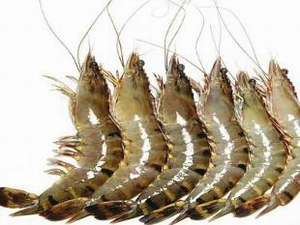 the shortage of farmed shrimps in the global market during the peak season, seafood traders in Gurgaon are facing the heat from dwindling supply of quality shrimps in the local market. "Last two months have seen a sudden plunge in the supply of fresh and cultured sea-shrimps variety like vannamei, black tiger prawns and campy prawns.
the shortage of farmed shrimps in the global market during the peak season, seafood traders in Gurgaon are facing the heat from dwindling supply of quality shrimps in the local market. "Last two months have seen a sudden plunge in the supply of fresh and cultured sea-shrimps variety like vannamei, black tiger prawns and campy prawns. Our daily supply of 1 tonne is down to 600-700 kg, a drop of 30 to 40 percent," said Akashdeep, owner of Gurgaon-based MM Fisheries. An attack of early mortality syndrome disease in aquaculture farms of Thailand, Vietnam and China has led to a global shortage of shrimp stock. This has triggered the demand and price of sea-prawns and Indian exporters have made a kill this year by supplying to key markets like US, Europe and Canada.
However, while exporters are having a field day, domestic traders and retailers are facing problems due to rise in seafood prices by 50 to 70 percent in the wholesale market. Ashok Bajaj of Bombay Fisheries in Gurgaon speaks up on the same lines, "The rupee depreciation in recent time made exporters greedy and they are exploiting the market by not only exporting high-grade shrimps directly from coastal areas but also channeling secondary prawns meant for domestic market to exports, thereby creating supply shortage."
MM Fisheries, which has two retail outlets in Gurgaon and Delhi, has reported a dip in their retail business by 20 to 25 percent during the early phase of the peak season, owing to the twin problems of price rise and supply deficit.
Peak season of global consumption for seafood is from October to March. Star Seafoods, another retail player has resorted to selling frozen shrimps, squids and all varieties of fishes to counter the deficit of fresh shrimps supply. However, many players in the field say this is not a viable option for others as it has storage issues.
According to Marine Production Export Development Authority (MPEDA), this year share of shrimps in the Indian seafood export basket will increase for 50 percent to over 70 percent. This is supported by increased production of cultured vannamei shrimps in farms in the eastern coast to meet global demand. MPEDA expects to clock over 30 percent growth in exports, surpassing the target for 2013-14.







